

2.7 - Chukchi. Language: Chukchi show big map.
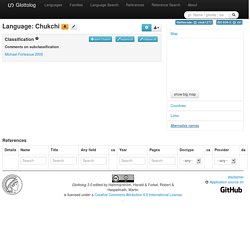
Ancient history. Ancient World. CHUKCHEE HOMEPAGE. Table of contents Note: you are free to use the material on this website for academic research purposes or for teaching.

However, you do NOT have permission to use this material for any commercial purpose whatsoever. This is a website for linguists interested in learning something about the grammatical structure of Chukchee and who either don't read Russian or have difficulty gaining access to Russian-language sources. The following chapters are an expanded version of notes I prepared when teaching Chukchee for one year on a one-year masters degree scheme at the (then) Polytechnic of Central London. The degree scheme included a compulsory course 'Structure of a Selected Language' and I offered to teach Chukchee when the teacher who was to have delivered that course, teaching an entirely different language, fell seriously ill. Much of the information presented here, especially in the earlier chapters, is also to be found in Bogoras (1922). Cultures. En.wiki2. Famiglia linguistica. Da Wikipedia, l'enciclopedia libera.
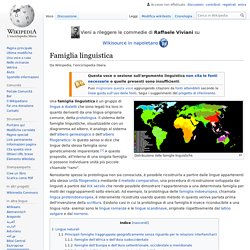
Le famiglie linguistiche possono essere suddivise in unità più piccole chiamate "rami" (perché la storia di una famiglia è spesso rappresentata da un diagramma ad albero). Gli antenati comuni di una famiglia (o ramo) vengono detti protolingue. Ad esempio, la protolingua ricostruibile per la ben nota famiglia indoeuropea si chiama proto-indoeuropeo (della quale non si hanno tracce scritte, in quanto parlata prima dell'invenzione della scrittura). Talvolta una protolingua può essere identificata con una lingua storicamente nota. The Ancient Indus Valley Civilization.
History. History of the Ainu. Home. Ireland's History in Maps - Celtic Ireland. Ice Ages and the Arrival of Humans --- Neolithic, Bronze and Iron Ages Maps: BC . 100 . 150 . 200 . 300 . 400 . 500 . 600 . 700 . 800 . 900 . 1000 . 1100 . 1200 . 1300 . 1400 . 1500 . 1600 . 1700 . 1800 . 1845 Reference: Before there were Counties --- Old Irish Kingdoms and Clans --- Old Irish Surnames The Myths of Time: After examining some of the ancient record for Ireland we turn to the early Irish chronicles.

The earliest written pre-history of Ireland is passed down in the form of saga stories, legal tracts, annalistic records, and fragmentary accounts which were recorded centuries after they actually may have occurred. Because of this scholars consider the events and people of the pre-Christian (and early Christian) period to be viewed with a skeptical eye. Prior to the arrival of sons of King Milesius the mythological tribes in Ireland were said to include the the Fomorians (Fomhóire), the Partholonians, the Nemedians, the Fir Bolgs and the Tuatha de Danann. La scrittura della civiltà di Harappa. Dal segno alla scrittura Dai cacciatori preistorici ai primi contabili Come nacquero i primi alfabeti.Tutte le scritture del mondo.
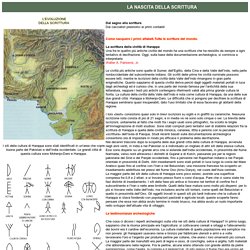
La scrittura della civiltà di Harappa Una fra le quattro più antiche civiltà del mondo ha una scrittura che ha resistito da sempre a ogni tentativo di decifrazione. Language. Languages. Learn Assyrian (Aramaic) Language Online. List of timelines. From Wikipedia, the free encyclopedia This is a list of timelines currently on Wikipedia.
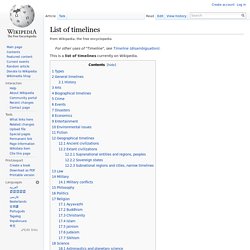
§Types[edit] §General timelines[edit] §History[edit] §Arts[edit] §Biographical timelines[edit] Lista delle famiglie linguistiche. Da Wikipedia, l'enciclopedia libera.
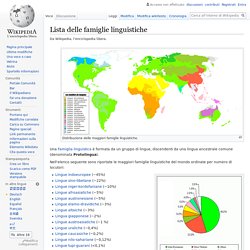
Mesopotamia. Muturzikin - Linguistic maps [en][fr][eu][es] Muturzikin.com © 2005-2016 All right reserved-Tous droits réservés Rouyn-Noranda, Québec, Canada Linguistic criteria, internal policy, terms of use, principal references and FAQ These maps display the ethnic and linguistic complexities in some parts of the world that are too often ignored or discarded by nationalists.
![Muturzikin - Linguistic maps [en][fr][eu][es]](http://cdn.pearltrees.com/s/pic/th/muturzikin-linguistic-maps-en-70155728)
Mythology. OLAC Language Resource Catalog. OLAC resources in and about the Chukot language. ISO 639-3: ckt The combined catalog of all OLAC participants contains the following resources that are relevant to this language: Other known names and dialect names: Chaun, Chuchee, Chukcha, Chukchee, Chukchi, Enmylinskij, Enurmin, Luoravetlan, Nunligranskij, Pevekskij, Uellanskij, Xatyrskij, Yanrakinot Use faceted search to explore resources for Chukot language.

OLAC resources in and about the Chukot language. Old Photos - Oglala. Big Rib – Oglala – 1868 Fire Thunder, Old Man Afraid of His Horses, Pipe - Oglala - 1868 Spotted Tail (Sicangu), Roman Nose (aka They Are Afraid Of His Shield, Mniconjou), Old Man Afraid of His Horses (Oglala), Lone Horn (aka One Horn, Mniconjou), Whistling Elk (Mniconjou), Pipe ( Oglala), Slow Bull (Oglala) – 1868 Horned Elk – Oglala – 1869 Red Dog – Oglala – 1870.
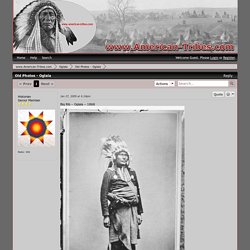
Omniglot - the online encyclopedia of writing systems and languages. Orok people - WikiVisually. Etymology[edit] The name Orok is believed to derive from the exonym Oro given by a Tungusic group meaning "a domestic reindeer". The Orok self-designation endonym is Ul'ta, probably from the root Ula (meaning "domestic reindeer" in Orok). Another self-designation is Nani.[2] Occasionally, the Oroks, as well as the Orochs and Udege, are erroneously called Orochons. Population and settlement[edit] Furthermore, Orok people live on the island of Hokkaido, Japan – in 1989, there was a community of about 20 people near the city of Abashiri. History[edit] Orok oral tradition indicates that the Oroks share history with the Ulch people, and that they migrated to Sakhalin from the area of the Amgun River in mainland Russia. Language and culture[edit] Red fox fur mittens of the Orok people, 19th century. Where on earth do they speak that language?
Hathor - The Ancient Egyptian Fertility Goddess of...